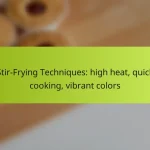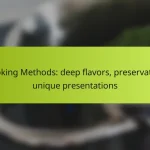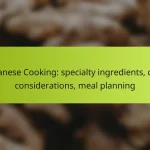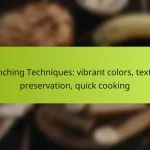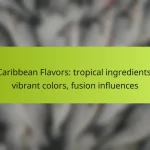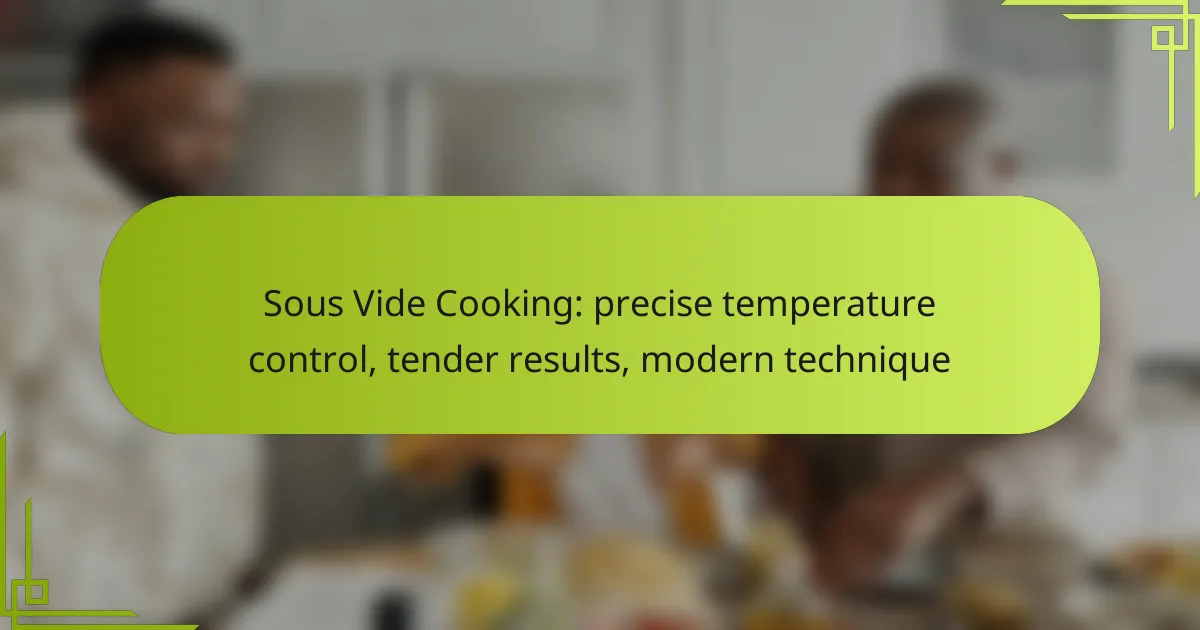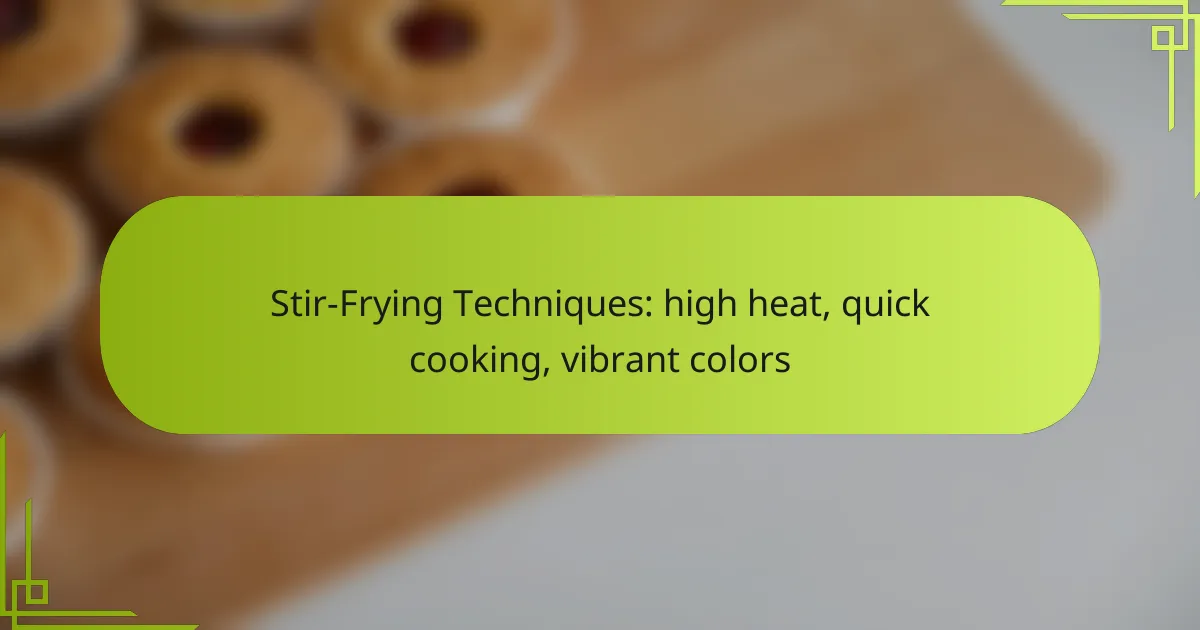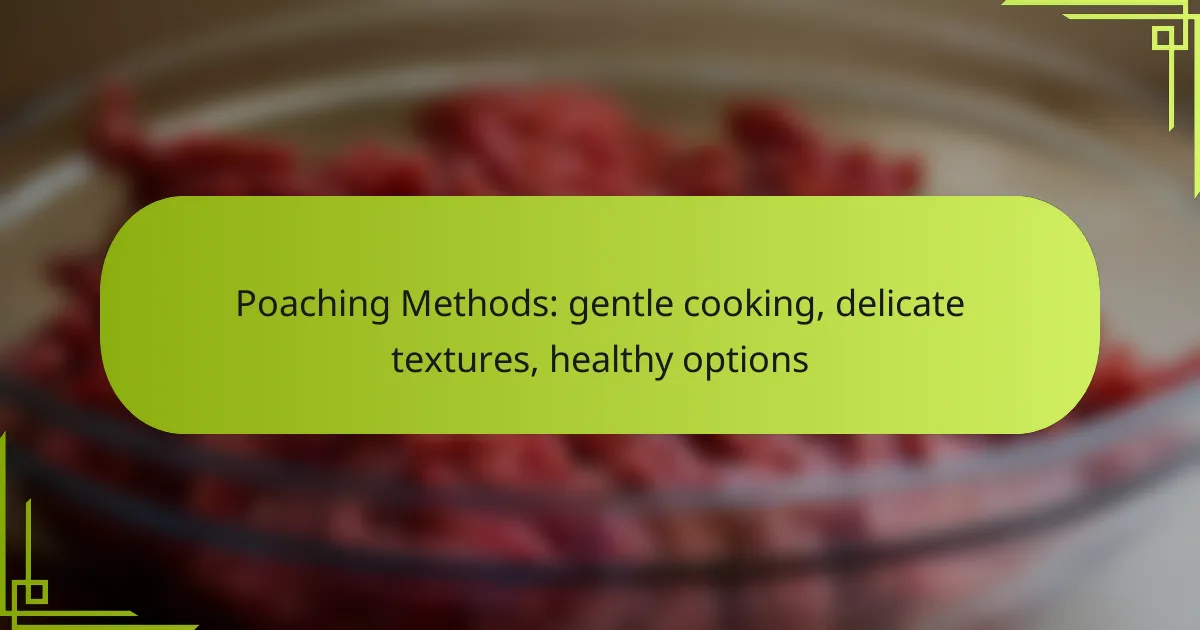Sous vide cooking is a modern culinary technique that involves sealing food in a bag and immersing it in a water bath at a precisely controlled temperature. This method not only ensures even cooking but also enhances tenderness by effectively breaking down tough fibers without the risk of overcooking, resulting in consistently flavorful dishes.
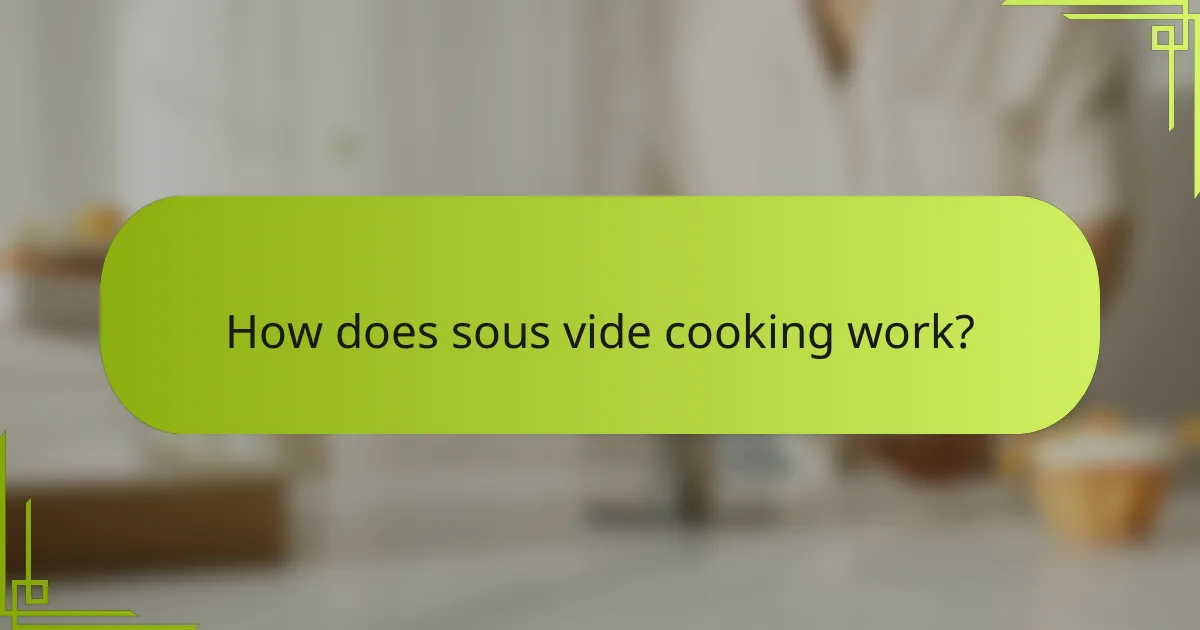
How does sous vide cooking work?
Sous vide cooking involves sealing food in a bag and immersing it in a water bath at a precisely controlled temperature. This method ensures even cooking and enhances tenderness by breaking down tough fibers without overcooking.
Water bath method
The water bath method is central to sous vide cooking, where food is submerged in water heated to a specific temperature. This technique allows for uniform heat distribution, ensuring that every part of the food reaches the desired doneness. Typically, the water temperature ranges from 50°C to 85°C, depending on the type of food being prepared.
Using a sous vide immersion circulator helps maintain the water temperature consistently, which is crucial for achieving the best results. This method is particularly effective for meats, vegetables, and eggs, providing a level of precision that traditional cooking methods often cannot match.
Vacuum sealing
Vacuum sealing is essential in sous vide cooking, as it removes air from the bag containing the food. This process not only prevents oxidation but also allows for better heat transfer during cooking. A vacuum-sealed bag ensures that flavors and juices are retained, enhancing the overall taste of the dish.
When vacuum sealing, it’s important to ensure that the bag is properly sealed to avoid leaks during cooking. Many home cooks use a vacuum sealer, but heavy-duty zip-top bags can also work if air is removed carefully. Avoid using regular plastic bags, as they may not withstand the cooking process.
Temperature control
Temperature control is a key feature of sous vide cooking, allowing for precise cooking times and temperatures tailored to specific foods. Maintaining a consistent temperature is crucial for achieving the desired texture and doneness, whether cooking steak, chicken, or vegetables.
For optimal results, it’s recommended to use a digital thermometer or sous vide machine that can accurately maintain the target temperature. Cooking times can vary significantly; for example, a steak may take 1 to 4 hours depending on thickness and desired doneness, while vegetables may only need 30 minutes to 1 hour. Always refer to reliable sous vide cooking charts for guidance on times and temperatures.
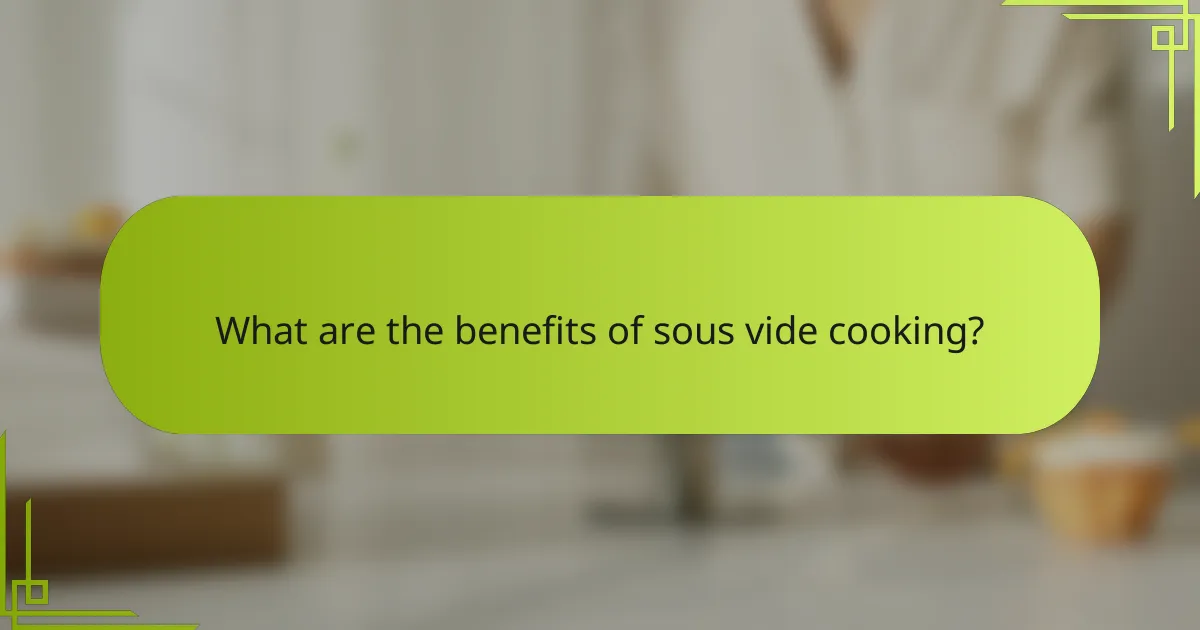
What are the benefits of sous vide cooking?
Sous vide cooking offers precise temperature control, resulting in consistently tender and flavorful dishes. This modern technique allows for enhanced culinary creativity while minimizing the risk of overcooking.
Consistent results
Sous vide cooking ensures that food is cooked evenly throughout, eliminating the common issue of hot and cold spots. By immersing food in a water bath at a specific temperature, you achieve uniform doneness, which is particularly beneficial for meats and vegetables.
This method allows for precise timing, as food can be left in the water bath for extended periods without compromising quality. For example, a steak cooked at 130°F (54°C) can remain in the bath for one to four hours without overcooking, providing flexibility in meal preparation.
Tender texture
The sous vide technique results in exceptionally tender textures, as the low cooking temperatures break down tough connective tissues in meats. Cooking at controlled temperatures for longer periods allows proteins to relax, leading to a melt-in-your-mouth experience.
This is particularly advantageous for tougher cuts of meat, such as brisket or chuck roast, which benefit from extended cooking times. For instance, cooking a chuck roast at 155°F (68°C) for 24 hours transforms it into a tender, juicy dish.
Flavor retention
One of the standout benefits of sous vide cooking is its ability to retain flavors. The vacuum-sealed bags used in this method trap juices and seasonings, preventing them from evaporating during the cooking process.
This results in more intense flavors and aromas, as the food cooks in its own juices. For example, marinating chicken before sous vide cooking enhances its flavor profile, making it more succulent and enjoyable.
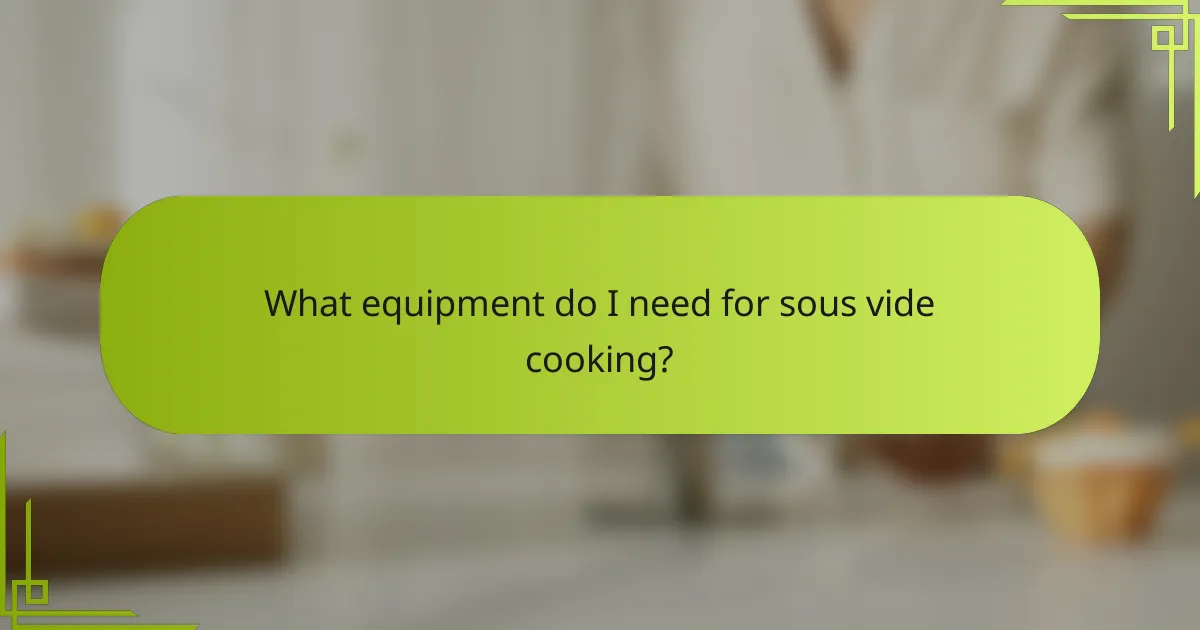
What equipment do I need for sous vide cooking?
To start sous vide cooking, you primarily need an immersion circulator, a vacuum sealer, and food-safe bags. These tools ensure precise temperature control and help achieve tender results in your meals.
Sous vide immersion circulator
A sous vide immersion circulator is the heart of the sous vide cooking process. It heats water to a precise temperature and circulates it, ensuring even cooking throughout the food. When choosing a circulator, look for models that can maintain temperatures within a range of 0.1°C to 1°C for optimal results.
Consider the power and capacity of the circulator as well. Higher wattage models heat water faster, while larger capacity units can accommodate more food. Popular brands often offer models priced between $100 and $300, depending on features.
Vacuum sealer
A vacuum sealer is essential for removing air from bags containing food, which prevents oxidation and enhances flavor during the sous vide process. There are two main types: external sealers and chamber sealers. External sealers are more affordable and suitable for home use, while chamber sealers are better for larger quantities and more professional applications.
When selecting a vacuum sealer, consider the ease of use, sealing strength, and whether it can handle liquids. Prices typically range from $50 to $500, depending on the model and capabilities.
Food-safe bags
Food-safe bags are crucial for sous vide cooking as they must withstand heat and be safe for cooking. Look for BPA-free, high-quality plastic bags designed for sous vide use. These bags can be either vacuum-sealable or reusable silicone bags, which are gaining popularity for their eco-friendliness.
Ensure the bags can handle temperatures up to 90°C (194°F) without breaking down. When using plastic bags, avoid low-quality options that may leach harmful chemicals. Prices for food-safe bags vary, with vacuum-seal bags costing around $10 for a pack of 50, while silicone bags can range from $15 to $30 each.
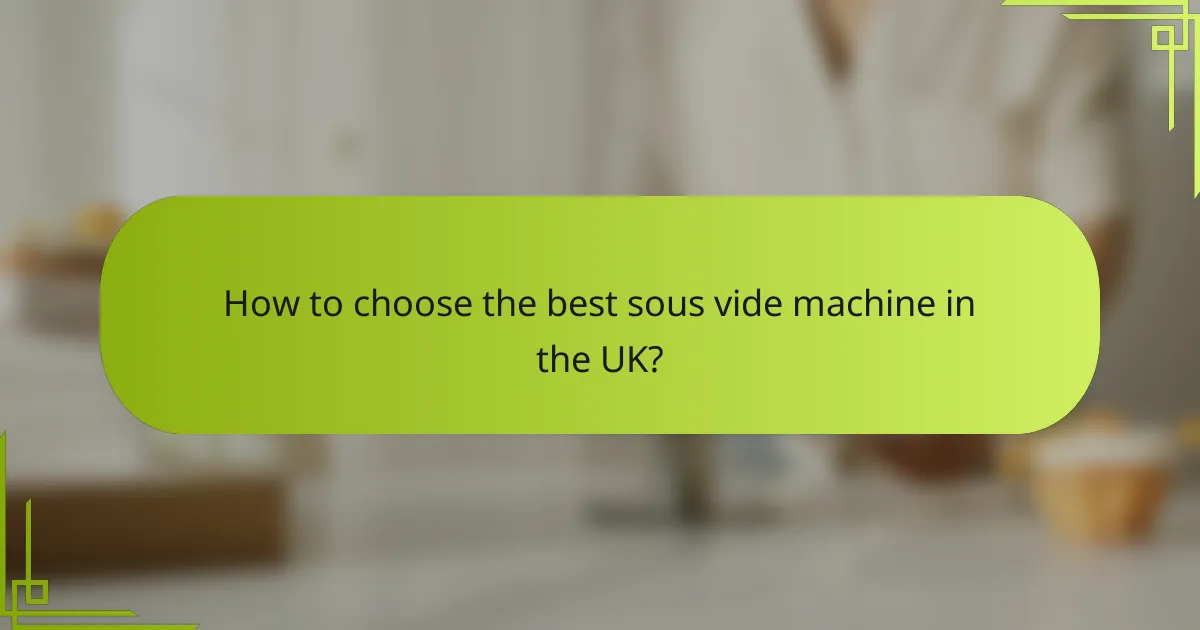
How to choose the best sous vide machine in the UK?
To choose the best sous vide machine in the UK, consider factors such as temperature range, water capacity, and brand reputation. A well-suited machine will ensure precise cooking and consistent results, making your sous vide experience enjoyable and effective.
Temperature range
The temperature range of a sous vide machine is crucial for achieving the desired doneness of various foods. Most machines offer a range from around 40°C to 90°C, allowing for a variety of cooking techniques from low-temperature sous vide eggs to high-temperature meats. Ensure the machine you select can reach the specific temperatures needed for your preferred recipes.
For instance, if you plan to cook steak, look for a machine that can maintain temperatures around 55°C to 60°C for optimal results. Machines with wider temperature ranges provide more versatility in cooking options.
Water capacity
Water capacity is another important consideration when selecting a sous vide machine. Most home models typically hold between 5 to 10 liters of water, which is sufficient for cooking meals for a small family. If you often prepare larger quantities or cook for gatherings, consider a machine with a higher capacity.
Keep in mind that larger water volumes may take longer to heat up, so balance your cooking needs with the machine’s heating efficiency. A larger capacity can also allow for cooking multiple items simultaneously, enhancing your meal prep efficiency.
Brand recommendations
When it comes to brands, several reputable options are available in the UK market. Anova and Joule are popular choices known for their reliability and user-friendly interfaces. Both brands offer models with various features, catering to different cooking styles and budgets.
Other notable brands include SousVide Supreme and Tefal, which also provide solid performance and good customer support. Research customer reviews and compare features to find the best fit for your cooking needs and preferences.
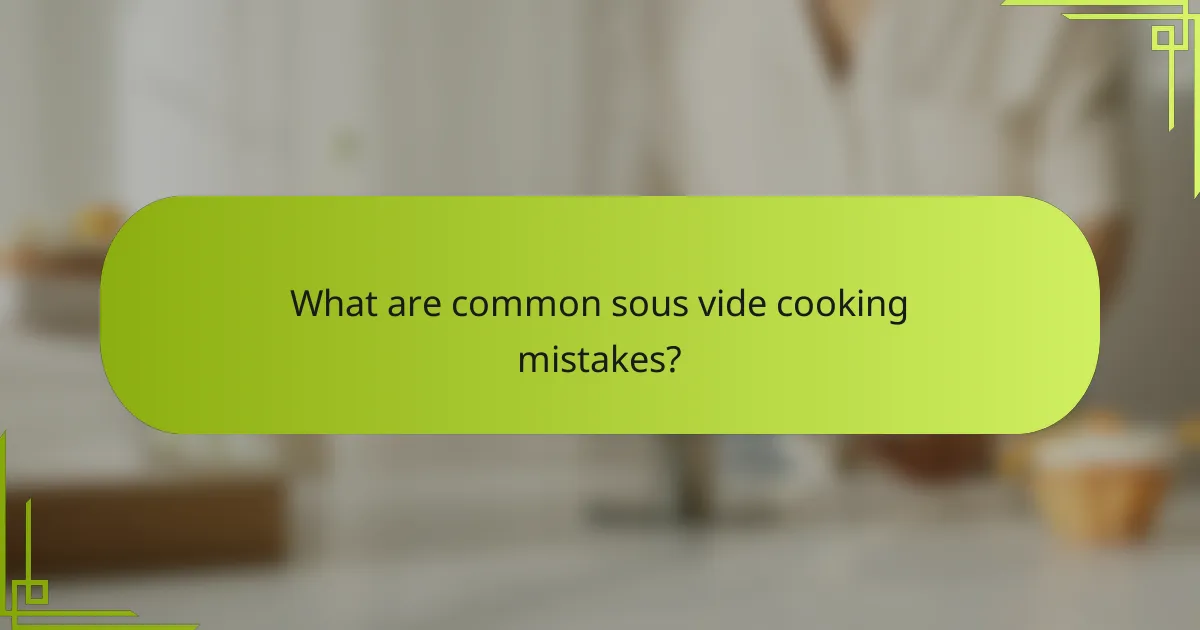
What are common sous vide cooking mistakes?
Common sous vide cooking mistakes can lead to unsatisfactory results, such as improperly cooked food or compromised flavors. Key issues include incorrect sealing, wrong temperature settings, and overcooking, each of which can significantly affect the final dish.
Incorrect sealing
Incorrect sealing can result in water entering the bag, which dilutes flavors and affects cooking efficiency. Ensure that the bag is vacuum-sealed properly, removing as much air as possible to prevent floating during cooking.
Use a reliable vacuum sealer or the water displacement method to achieve a tight seal. Check for leaks by gently pressing the bag underwater before cooking.
Wrong temperature settings
Using incorrect temperature settings can lead to undercooked or overcooked food. Each type of food has an ideal temperature range for sous vide cooking; for example, chicken is often cooked at around 65-75°C (149-167°F) depending on the desired texture.
Always consult a reliable sous vide cooking guide or app for specific temperature recommendations. Investing in a good immersion circulator with precise temperature control can help avoid this mistake.
Overcooking
Overcooking is a common issue in sous vide cooking, as food can remain in the water bath for extended periods without drying out. However, leaving food in the water too long can lead to undesirable textures, especially with proteins.
To avoid overcooking, adhere to recommended cooking times for each type of food. For example, steak can typically be cooked for 1-4 hours, while vegetables may only need 30 minutes to 2 hours. Setting a timer can help ensure you remove the food at the right moment.
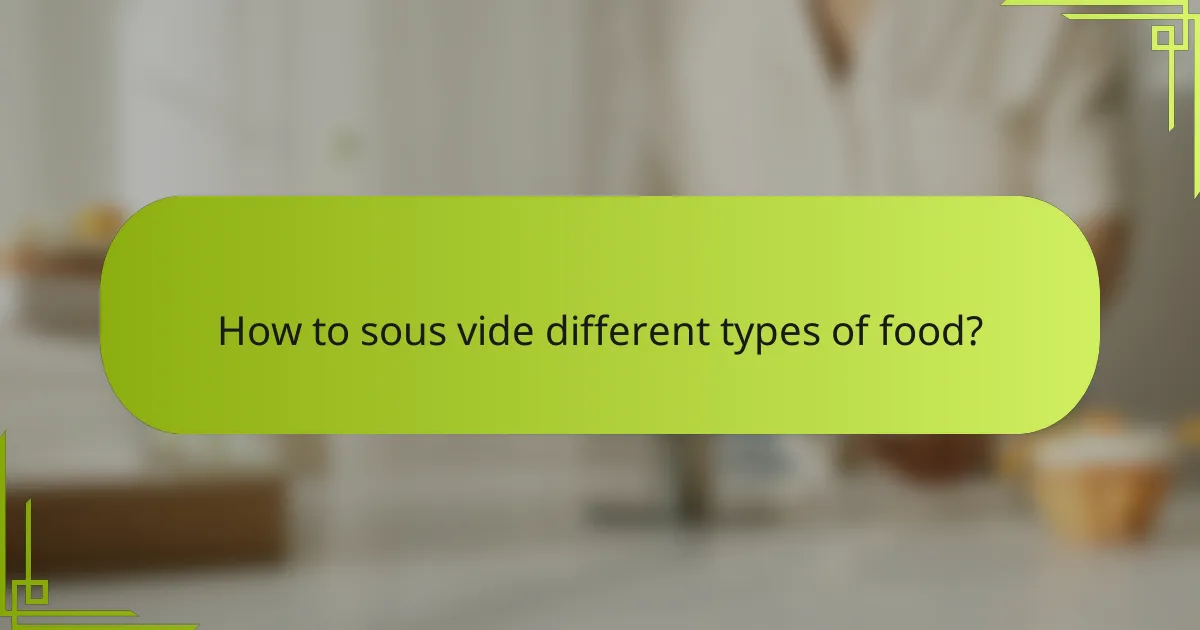
How to sous vide different types of food?
Sous vide cooking allows for precise temperature control, making it ideal for various types of food. By immersing food in a water bath at a consistent temperature, you achieve tender and flavorful results across meats, vegetables, and even desserts.
Meat cooking times
Cooking times for meat in sous vide vary based on the type and thickness of the cut. Generally, tougher cuts like brisket benefit from longer cooking times, while tender cuts like chicken breast require less time.
For example, a beef steak cooked at 54°C (129°F) can take anywhere from 1 to 4 hours, depending on thickness. In contrast, chicken breast at 65°C (149°F) typically cooks well in about 1 to 2 hours. Always ensure meats reach safe internal temperatures to eliminate harmful bacteria.
As a rule of thumb, thicker cuts require longer cooking times. Use a sous vide guide or app to find specific recommendations for each type of meat, ensuring optimal tenderness and flavor.
